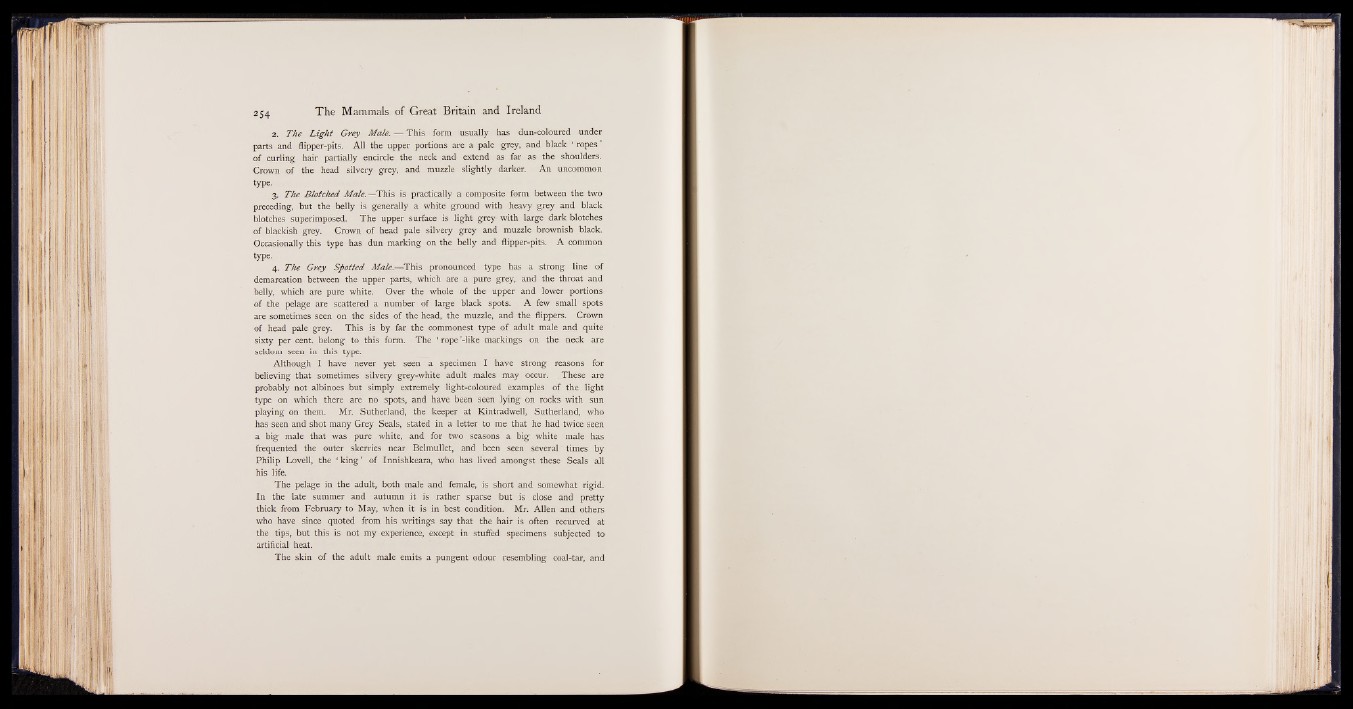
2. The Light Grey Male. —- This form usually has dun-coloured under
parts and flipper-pits. All the upper portions are a pale grey, and black ‘ ropes’
of curling hair partially encircle the neck and extend as far as the shoulders.
Crown of the head silvery grey, and muzzle slightly darker. An uncommon
type.
3. The Blotched Male.—This is practically a composite form between the two
preceding, but the belly is generally a white ground with heavy grey and black
blotches superimposed. The upper surface is light grey with large dark blotches
of blackish grey. Crown of head pale silvery grey and muzzle brownish black.
Occasionally this type has dun marking on the belly and flipper-pits. A common
type.
4. The Grey Spotted Male.— This pronounced type has a strong line of
demarcation between the upper parts, which are a pure grey, and the throat and
belly, which are pure white. Over the whole of the upper and lower portions
of the pelage are scattered a number of large black spots. A few small spots
are sometimes seen on the sides of the head, the muzzle, and the flippers. Crown
of head pale grey. This is by far the commonest type of adult male and quite
sixty per cent, belong to this form. The ‘ rope ’-like markings on the neck are
seldom seen in this type.
Although I have never yet seen a specimen I have strong reasons for
believing that sometimes silvery grey-white adult males may occur. These are
probably not albinoes but simply extremely light-coloured examples of the light
type on which there are no spots, and have been seen lying on rocks with sun
playing on them. Mr. Sutherland, the keeper at Kintradwell, Sutherland, who
has seen and shot many Grey Seals, stated in a letter to me that he had twice seen
a big male that was pure white, and for two seasons a big white male has
frequented the outer skerries near Belmullet, and been seen several times by
Philip Lovell, the ‘ king ’ of Innishkeara, who has lived amongst these Seals all
his life.
The pelage in the adult, both male and female, is short and somewhat rigid.
In the late summer and autumn it is rather sparse but is close and pretty
thick from February to May, when it is in best condition. Mr. Allen and others
who have since quoted from his .writings say that the hair is often recurved at
the tips, but this is not my experience, except in stuffed specimens subjected to
artificial heat.
The skin of the adult male emits a pungent odour resembling coal-tar, and